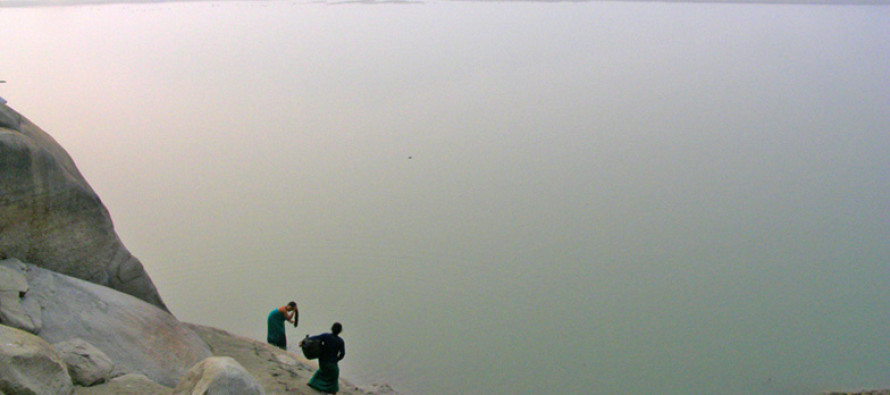Trans-boundary Rivers with India Bangladesh

Bangladesh has 57 trans-boundary rivers, of which 54 are with India and 3 are Myanmar.
The water dispute with India is as old as the birth of Bangladesh. It started even before Bangladesh when India’s ill-conceived Farakka Barrage on the Ganges, (11 miles from Bangladesh’s border) was to divert water in the Hoogly River for flushing silt from the river, not for agriculture. At the time, some Indian engineers opposed the construction of the Farakka Barrage.
India has steadily without any agreement with Bangladesh embarked on constructing dam or diverting water from many trans-boundary rivers, such as Teesta, Gumti, Khowai. India had reportedly disturbed or changed the natural flow of trans-boundary rivers by constructing spurs or embankments, such as on Muhuri, Chagalnaiya, Fulchari, Kachua and many others in Tripura, flowing into Bangladesh. As a result, as of 1979, eight chars (islets) in the tributaries of Muhuri and Kachua were detected together with changing the flow of rivers to the disadvantage of Bangladesh.
The Tipaimukh project of storage of waters on Barak River, barely one kilometer from Zakiganj border, for the 1,500 MW hydropower, is expected to dry up the flow of Surma and Kushiyara, source of Meghna river, according to Bangladeshi water experts. Recently however it is good to note India invited Bangladesh experts to visit the Tipaimukh project to gauge the impact on Bangladesh.
Proposed diversion of waters of Brahmaputra River:
Brahma Chellany, an Indian academic for the strategic studies, wrote an article (International Herald Tribune on 27th June, 2007) where he states that China attempts to dam or redirect flow of waters from the Tibetan plateau, including the Brahmaputra River.
According to the same writer, China’s intensive farming need waters and it is increasingly turning its attention to water reserves of Tibetan plateau. China is presently toying with massive inter-basin and inter-river water transfer projects including re-routing northward the Brahmaputra waters.
Furthermore several Chinese projects in west-central Tibet have a bearing on river-water flows into India but according to the writer, China refuses to share information with India.
Being a lower riparian, Bangladesh is most vulnerable to unilateral withdrawal of waters of trans-boundary rivers by upper riparian countries. Bangladesh is also one of the top ten countries (if not, number one country) which would be seriously affected by the Global Climate Change. It is reported that water shortages in much of South Asia will constitute a grave threat to economic development.
Global Water Law:
In 1997, the UN General Assembly adopted, for the first time on a global scale, legal norms on cooperative use of waters of Trans-Boundary Rivers, known as the Convention on the Law of Non-Navigational Uses of International Watercourses. This is the global water law on international watercourses (Trans-Boundary Rivers) for the use of non-navigational/consumptive uses.
The use of river water is of two types: (a) non-consumptive and (b) consumptive. Navigation is a non-consumptive use of water because river water is not depleted or reduced through navigation. Consumptive use of water consists of withdrawing water for agriculture and diversion of water for other purposes. Consumptive use always reduces water in rivers and interferes with the natural flow of rivers.
The UN Law Convention is a document that was approved by the General Assembly by a vote of 103 on May 21, 1997. 27 countries abstained and 3 opposed. The 103 affirmative votes of the states show that the Convention is generally accepted and indicates broad agreement.
The geographical and hydrological area within which the Law of the Convention is operative is defined by the term ‘international watercourse’, “a system of surface waters and ground waters constituting by virtue of their physical relationship a unitary whole and normally flowing into a common terminus (…) parts of which are situated in different States” (Article 2(a),(b)).
This definition replaced the early use of the drainage basin concept of the Helsinki Rules of 1966. Instead, the states favoured an approach based on definitions which are used in earlier treaties and relate to the water channel of a river.
The salient features of the Convention are briefly as follows
(i) It creates a legal framework for utilisation of equitable manner of waters of trans-boundary rivers.
(ii) It also calls for development, conservation, management and protection of international watercourses and the promotion of the optimal and sustainable utilisation for present and future generations.
(iii) It recognises relevant factors in equitable utilization of waters, taking into account of geographic, hydrographic, hydrological, climatic, ecological and other factors for a natural character.
(iv) It requires co-riparian countries to exchange of data and information on trans-boundary rivers.
(v) It envisages co-riparian countries taking appropriate measures to prevent harm to other co-riparian states
(vi) It affirms the importance of cooperation and good neighbourliness of all riparian states.
Given the above background, the 1997 UN Water Law Convention will provide a set of international norms for Bangladesh to cooperate with upper riparian countries (Nepal and India) for utilisation, development, management and adequate protection of flows of trans-boundary rivers. The Water Resources Ministry may take the lead, on a priority basis in consultation with Foreign and Law Ministries, to examine and ratify the UN Law Convention.
By Barrister Harun ur Rashid
Former Bangladesh Ambassador to the UN, Geneva


